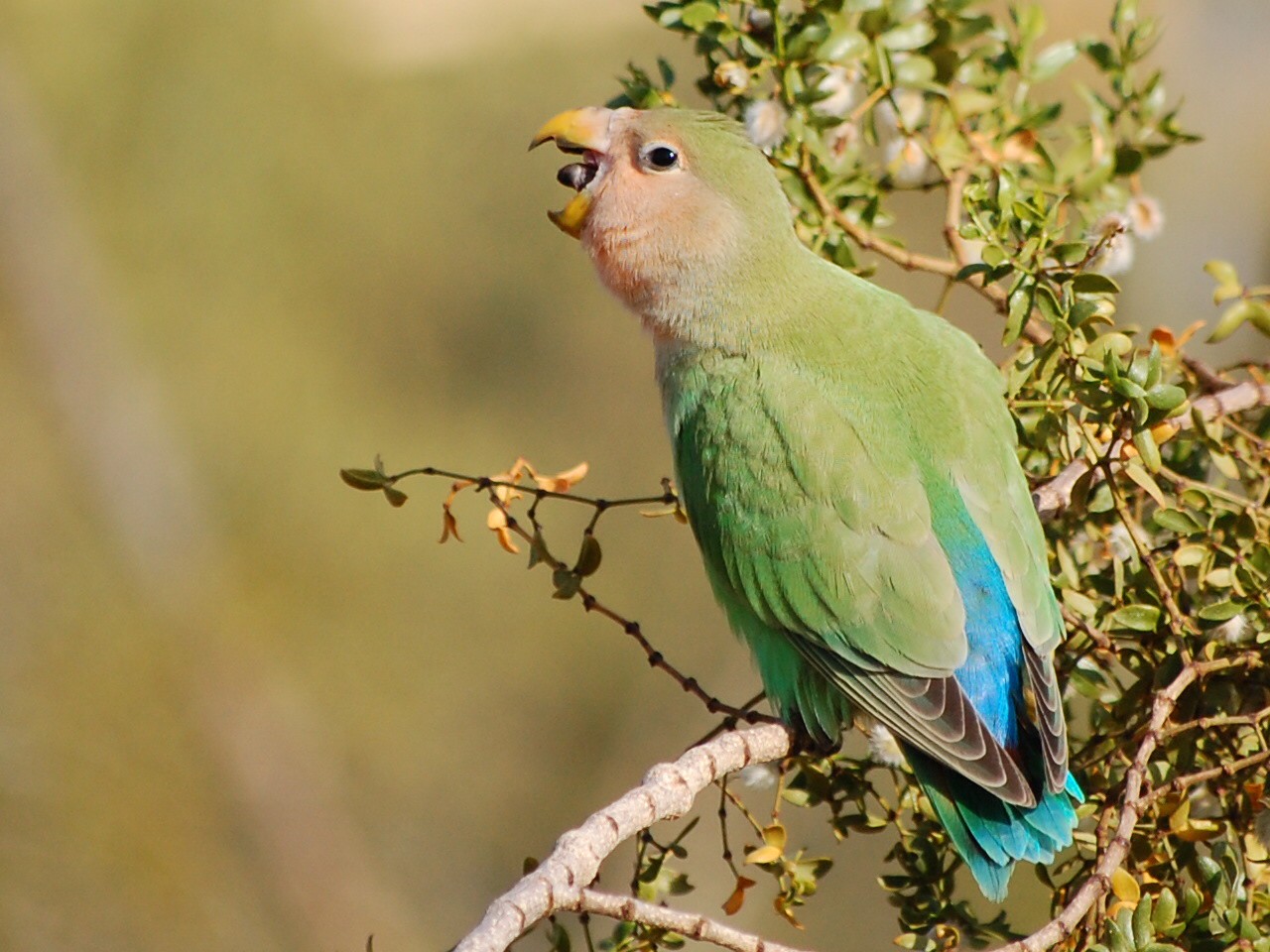- Lovebird
Taxobox
name = Lovebird
status = LC | status_system = IUCN3.1

image_caption =Peach-faced Lovebird eating from a tree
image_width = 300px
regnum =Animal ia
phylum = Chordata
classis = Aves
ordo =Psittaciformes
familia = Psittacidae
subfamilia =Psittacinae
tribus =Psittaculini
genus = "Agapornis"
genus_authority = Selby, 1836
subdivision_ranks = Species
subdivision = Nine - see textLovebird is the commonly used name for the
genus , "Agapornis" (from the Greek αγάπη, "agape", for love, and όρνις, "ornis", for Bird), and can refer to any of the nine species of the genus. They are a social and affectionate smallparrot . Eight species of the genus are native to the African continent and the Madagascar Lovebird is native to Madagascar.The name Lovebird stems from these parrots' strong, monogamous pair bonding and the long periods of time in which paired birds will spend sat beside one another. This is reflected by the bird's name in other languages: in German, "die Unzertrennlichen", and in French "les inséparables", both meaning "the inseparables".
Lovebirds live in small flocks and eat mainly
fruit ,vegetable s, some grasses and seed. Abyssinian Lovebirds also eatinsect s andfig s, and the Black-collared Lovebirds have a special dietary requirement for native figs making them almost impossible to keep in captivity.Some species of the genus are amongst the most popular parrots kept as pets, and several colour mutations have been selectively breed in aviculture. Their average lifespan is 10 to 15 years.cite book |first = David| last = Alderton | title = The ultimate encyclopedia of caged and aviary birds | isbn = 184309164X |pages= p. 216–219| publisher = Hermes House |location = London, England | year = 2003]
Description
Lovebirds vary in size from about 13 to 17 centimeters in length and from about 40 to 60 grams in weight. They are among the smallest parrots in the world, and they are characterized by a stocky build, a short blunt tail, and a relatively large beak for their overall size. Wild-type lovebirds are mostly green with a variety of colours on their upper body depending on the species. The Fischer's Lovebird, Black-cheeked Lovebird, and the Masked Lovebirds have a white ring around their eyes. The Abyssinian Lovebird, the Madagascar Lovebird, and the Red-faced Lovebird are sexually dimorphic. Many color mutations have been produced by selective breeding in the species that are popular in aviculture.
Taxonomy
The lovebird genus comprises nine species of which five are monotypic and four are divided into subspecies.cite book |first = Kenny |last = Le Breton |title = Lovebirds...getting started |page =pp. 84–98 |isbn =0866224114 |publisher = T.F.H. Publictions |location = USA] Eight of them are native in the mainland of
Africa and the Madagascar Lovebird is native toMadagascar . In the wild the different species are separated geographically.
Wikimedia Foundation. 2010.
